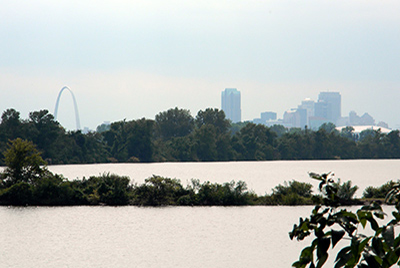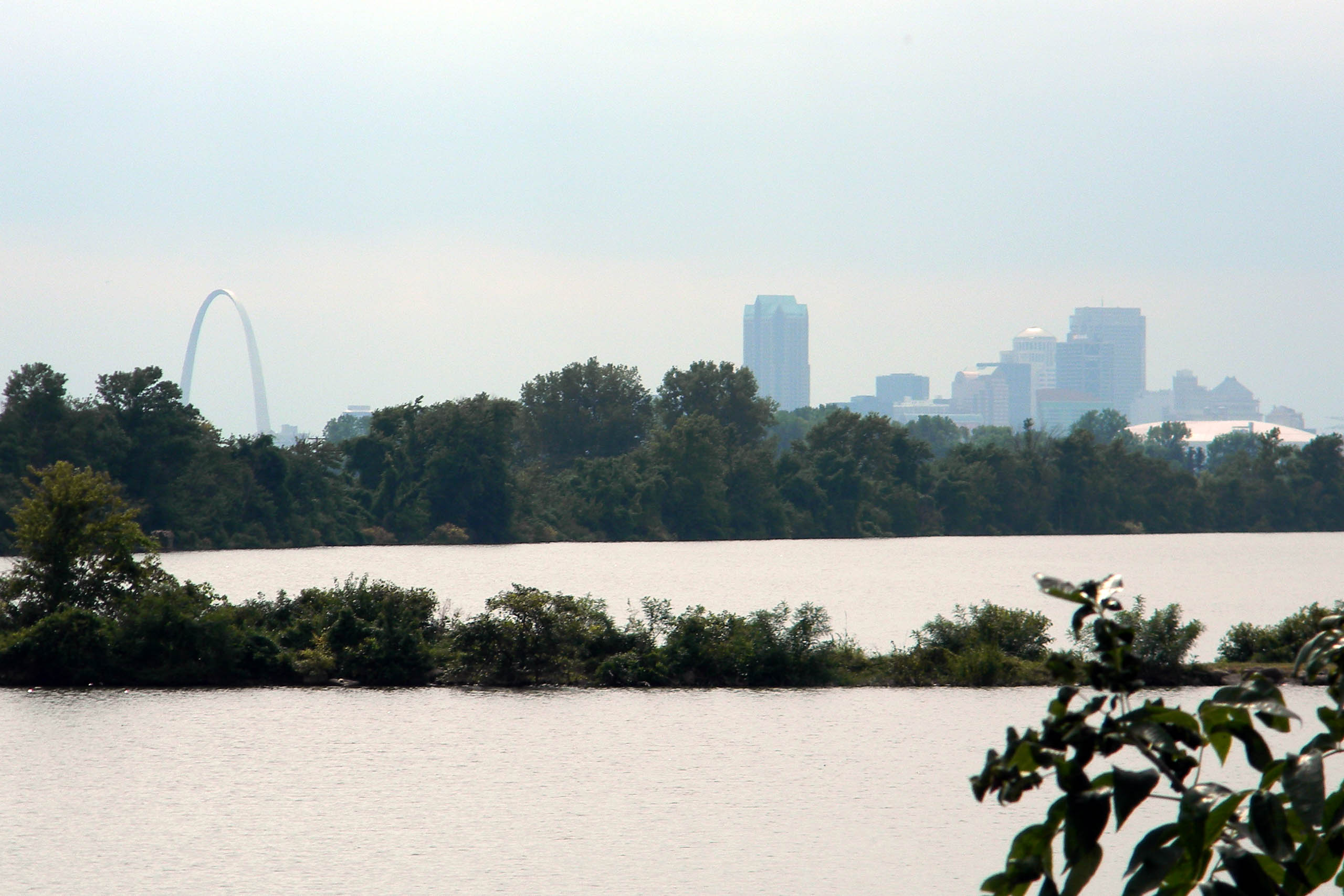



Horseshoe Lake is an oxbow lake formed by a remnant Mississippi River meander millennia ago. The lake is a National Natural Landmark, and at 1,800-plus acres is the second-largest natural lake in the state of Illinois after Lake Michigan. While most of the lake is little over a meter deep, sand and gravel excavation in the north branch have increased the depth to more than 15 meters. Although the western portion of the lake sits adjacent to the hulking U.S. Steel plant of Granite City and forms part of its cooling apparatus, the rest of the lake is home to virtually every bird species found in the state. The entire lake, its islands and surrounding shores are incorporated into the 2,900-acre Horseshoe Lake State Park. The southern branch of the lake is separated from the main body of the lake by an earthen causeway, and the south section is drained yearly in July and August seeded with millet by plane in an effort to attract snowy egrets and blue herons. Bluegill and channel catfish are regularly fished from the causeway linking the State Park HQ and Walkers Island. Camping, fishing, boating, and hunting are all allowed in the park, with duck blinds dotting the lake's surface. Archeologists note that the lake was a central source for fish and other game for the indigenous inhabitants and communities of the bottom. For many, it remains so today.